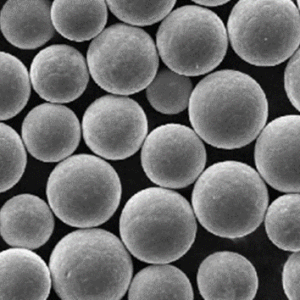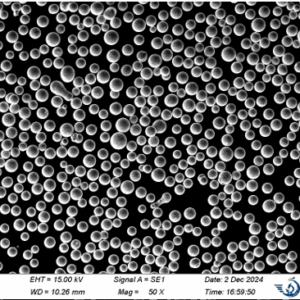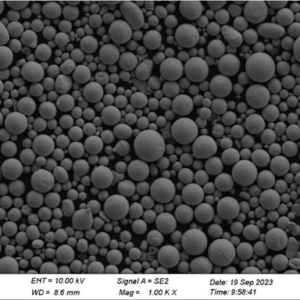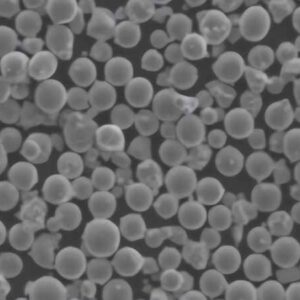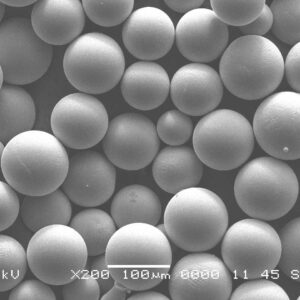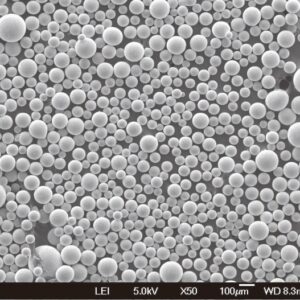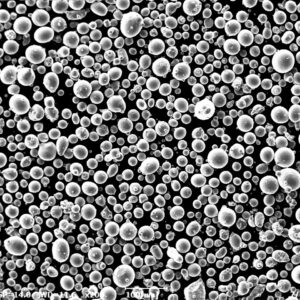다중 재료 구조 다양한 소재를 혼합하여 각 소재의 고유한 특성을 살린 부품을 만드는 최첨단 엔지니어링을 대표합니다. 이러한 접근 방식을 통해 엔지니어와 디자이너는 제품의 기계적, 열적, 미적 특성을 맞춤화할 수 있어 항공우주, 자동차, 가전제품과 같은 산업에서 상당한 발전을 이룰 수 있습니다.
이 글에서는 다중 재료 구조의 세계에 대해 자세히 알아볼 것입니다. 사용되는 다양한 유형의 재료와 그 구성, 특성 및 응용 분야를 살펴볼 것입니다. 또한 다양한 다중 재료 구조를 비교하고 장점과 한계를 분석하며 이 매력적인 분야의 미래에 대한 통찰력을 제공합니다.
멀티 머티리얼 구조 개요
다중 재료 구조는 단일 구성 요소 내에 두 가지 이상의 재료를 통합하는 혁신적인 접근 방식입니다. 이 개념은 각 소재의 강점을 활용하여 단일 소재만 사용했을 때 발생할 수 있는 한계를 극복합니다.
예를 들어, 자동차 산업에서는 알루미늄과 같은 금속과 폴리머를 결합하면 가볍고 튼튼한 구조를 만들어 연비와 안전성을 향상시킬 수 있습니다. 항공우주 분야에서는 탄소 섬유와 티타늄을 결합하면 고성능 항공기에 필수적인 매우 강하고 가벼운 부품을 만들 수 있습니다.
멀티 머티리얼 구조의 주요 이점
- 향상된 성능: 소재를 조합하면 우수한 기계적 및 열적 특성을 얻을 수 있습니다.
- 무게 감소: 다중 소재 구조는 종종 강도는 그대로 유지하면서 구성 요소를 더 가볍게 만듭니다.
- 비용 효율성: 덜 중요한 영역에 저렴한 재료를 사용하면 전체 비용을 절감할 수 있습니다.
- 디자인 유연성: 단일 소재 구성 요소로는 불가능했던 혁신적인 디자인을 구현할 수 있습니다.
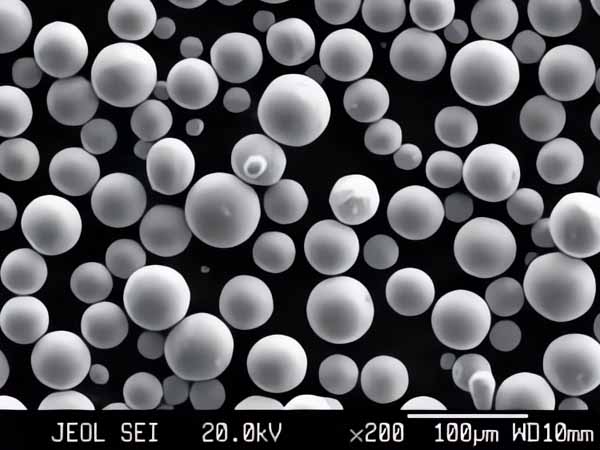
구성 멀티 머티리얼 구조
다중 재료 구조의 구성은 용도와 원하는 특성에 따라 매우 다양합니다. 일반적으로 이러한 구조에는 금속, 폴리머, 세라믹 및 복합 재료가 조합되어 있습니다.
멀티 머티리얼 구조에 사용되는 주요 머티리얼
| 재질 | 유형 | 구성 | 속성 | 애플리케이션 |
|---|---|---|---|---|
| 알루미늄 합금 | 금속 | Al + Mg, Si, Cu | 경량, 내식성, 연성, 연성 | 자동차, 항공우주 |
| 티타늄 합금 | 금속 | Ti + Al, V | 고강도, 경량, 내식성 | 항공우주, 의료용 임플란트 |
| 탄소 섬유 | 합성 | 탄소 섬유 + 수지 | 매우 견고하고 가벼움 | 항공우주, 스포츠용품, 자동차 |
| 폴리머 복합재 | 합성 | 폴리머 매트릭스 + 보강재(유리, 탄소) | 다용도, 가볍고 튼튼한 | 자동차, 소비자 가전 |
| 도자기 | 비금속 | SiC, Al2O3 | 단단하고 부서지기 쉬운 고온 내성 | 절삭 공구, 전자, 항공우주 |
| 스테인리스 스틸 | 금속 | Fe + Cr, Ni | 강력한 내식성, 내구성 | 건설, 자동차, 의료 기기 |
| 구리 합금 | 금속 | Cu + Zn, Sn | 우수한 전도성, 내식성 | 전기 부품, 배관 |
| 니켈 합금 | 금속 | Ni + Cr, Mo, Fe | 고온 내성, 부식 방지 | 항공우주, 화학 공정 |
| 유리 섬유 | 합성 | 유리 섬유 + 폴리머 | 강력하고 단열성, 경량 | 건설, 자동차, 해양 |
| 마그네슘 합금 | 금속 | Mg + Al, Zn | 초경량, 우수한 가공성 | 자동차, 항공우주, 전자 |
멀티 머티리얼 구조의 속성 및 특성
다중 재료 구조의 특성은 사용되는 재료와 결합 방식에 따라 크게 달라집니다. 다음은 고려해야 할 몇 가지 주요 특성입니다.
멀티 머티리얼 구조의 주요 특성
| 속성 | 설명 | 영향 요인 |
|---|---|---|
| 기계적 강도 | 부러지거나 변형되지 않고 힘을 견딜 수 있는 능력. | 재료 구성, 접착 기술 및 구조 설계 |
| 열 전도성 | 열을 효율적으로 전도하는 능력. | 사용된 재료, 재료 간 인터페이스 |
| 내식성 | 열악한 환경에서도 성능 저하를 견딜 수 있는 능력. | 소재 선택, 보호 코팅 |
| 무게 | 구조의 질량은 무게 감소가 필수적인 애플리케이션에서 매우 중요한 요소입니다. | 소재 밀도, 디자인 |
| 피로 저항 | 반복되는 로딩 및 언로딩 사이클을 고장 없이 견딜 수 있는 능력. | 소재 선택, 본딩 품질 |
| 내충격성 | 갑작스러운 충격 시 에너지를 흡수하고 발산하는 능력. | 소재 인성, 복합 레이어링 |
| 미적 매력 | 구조의 시각적 및 촉각적 특성은 소비자 선호도에 영향을 미칠 수 있습니다. | 표면 마감, 소재 조합 |
| 전기 전도성 | 전자 애플리케이션에 중요한 전기를 전도하는 능력입니다. | 사용된 금속 및 복합 재료의 유형 |
멀티 머티리얼 구조의 유형
다양한 유형의 다중 재료 구조가 있으며, 각 구조는 다양한 산업의 특정 요구 사항을 충족하도록 설계되었습니다. 가장 일반적인 유형은 다음과 같습니다:
하이브리드 금속-복합 구조물
이러한 구조는 알루미늄이나 강철과 같은 금속과 탄소섬유와 같은 복합 소재를 결합한 것입니다. 그 결과 금속의 강도와 복합 소재의 경량 특성을 모두 갖춘 부품이 탄생했습니다. 일반적으로 자동차 및 항공우주 산업에서 사용됩니다.
금속-폴리머 구조
이 유형에서는 알루미늄이나 마그네슘과 같은 금속을 폴리머와 결합하여 가볍고 부식에 강한 부품을 만듭니다. 이러한 구조는 가전제품 및 자동차 애플리케이션에 자주 사용됩니다.
다중 금속 구조
다중 금속 구조는 알루미늄과 강철 또는 구리와 니켈과 같은 서로 다른 금속을 통합하는 것을 포함합니다. 이러한 유형의 구조는 고강도 및 열전도율의 조합이 필요한 애플리케이션에 특히 유용합니다.
세라믹-금속 구조
세라믹-금속 구조는 세라믹의 경도 및 고온 저항성과 금속의 인성을 결합한 것입니다. 절삭 공구, 항공우주 부품 및 전자 제품에 사용됩니다.
3D 프린팅 다중 재료 구조
3D 프린팅의 발전으로 재료 분배를 정밀하게 제어할 수 있는 복잡한 다중 재료 구조의 제작이 가능해졌습니다. 이 기술은 의료용 임플란트, 항공우주, 프로토타입 제작과 같은 산업에 혁신을 일으키고 있습니다.
응용 프로그램 멀티 머티리얼 구조
다중 재료 구조는 다양한 산업 분야에서 폭넓게 활용되고 있습니다. 아래는 몇 가지 주요 응용 분야를 강조한 표입니다.
다중 재료 구조의 응용
| 산업 | 애플리케이션 | 사용된 재료 | 혜택 |
|---|---|---|---|
| 자동차 | 차체 패널, 섀시 구성품, 엔진 부품 | 알루미늄, 탄소 섬유, 폴리머 | 무게 감소, 연비 개선, 안전성 |
| 항공우주 | 동체 구성품, 터빈 블레이드, 랜딩 기어 | 티타늄 합금, 탄소 섬유, 세라믹 | 중량 대비 강도, 고온 저항성 |
| 소비자 가전 | 스마트폰, 노트북, 웨어러블 디바이스 | 마그네슘 합금, 폴리머, 유리 섬유 | 가벼운 무게, 내구성, 미적 매력 |
| 의료 기기 | 임플란트, 수술 기구 | 티타늄, 스테인리스 스틸, 폴리머 | 생체 적합성, 강도, 내식성 |
| 건설 | 구조 구성 요소, 외관 패널, 단열재 | 강철, 유리 섬유, 폴리머 | 강도, 내구성, 단열성 |
| 해양 | 선체 구성품, 프로펠러, 갑판 구조물 | 알루미늄, 스테인리스 스틸, 복합재 | 내식성, 경량, 강도 |
| 에너지 | 풍력 터빈 블레이드, 태양광 패널 프레임, 파이프라인 구성품 | 복합재, 스테인리스 스틸, 세라믹 | 내구성, 환경 요인에 대한 내성 |
| 스포츠 장비 | 자전거 프레임, 골프 클럽, 헬멧 | 탄소 섬유, 알루미늄, 폴리머 | 경량, 고성능, 내구성 |
| 화학 처리 | 리액터, 배관, 밸브 | 니켈 합금, 세라믹, 스테인리스 스틸 | 내식성, 고온 성능 |
| 방어 | 갑옷 도금, 미사일 부품, 구조 부품 | 티타늄 합금, 복합재, 세라믹 | 탄도 보호, 경량, 고강도 |
사양, 크기, 등급 및 표준
다중 소재 구조를 선택할 때는 적용되는 사양, 크기, 등급 및 표준을 고려하는 것이 중요합니다. 아래는 몇 가지 주요 측면을 요약한 표입니다.
다중 재료 구조의 사양, 크기, 등급 및 표준
| 재질 | 사양 | 사용 가능한 크기 | 성적 | 표준 |
|---|---|---|---|---|
| 알루미늄 합금 | ASTM B209, EN AW-2024, EN AW-7075 | 시트, 플레이트, 압출, 튜브 | 2024, 7075, 6061 | ISO 9001, ASTM B211 |
| 티타늄 합금 | ASTM B265, Ti-6Al-4V | 시트, 바, 단조품 | Ti-6Al-4V, Ti-6Al-4V ELI | AMS 4928, ASTM F136 |
| 탄소 섬유 | ASTM D3039, ISO 14129 | 롤, 프리프레그, 패널 | T300, T700, M55J | ASTM D7264, ISO 13019 |
| 폴리머 복합재 | ASTM D5956, ISO 14693 | 시트, 막대, 사용자 지정 모양 | SMC, BMC, CFRP | ASTM D5766, ISO 75-2 |
| 도자기 | ASTM C1161, ISO 6872 | 맞춤형 모양, 플레이트, 막대 | Al2O3, SiC, ZrO2 | ISO 6872, ASTM C1161 |
| 스테인리스 스틸 | ASTM A240, ISO 15510 | 시트, 플레이트, 파이프, 바 | 304, 316, 17-4PH | ASME SA240, ASTM A312 |
| 구리 합금 | ASTM B281, ASTM B622 | 튜브, 시트, 막대 | C11000, C70600 | ASTM B134, ISO 281 |
| 니켈 합금 | ASTM B443, ASTM B564 | 바, 플레이트, 시트 | 인코넬 625, 모넬 400 | ASTM B444, ISO 6265 |
| 유리 섬유 | ASTM D3808, ISO 13019 | 시트, 막대, 직조 직물 | E-글래스, S-글래스 | ASTM D3039, ISO 9001 |
| 마그네슘 합금 | ASTM B90, AMS 4375 | 시트, 바, 압출 | AZ31B, ZK60 | ASTM B107, ISO 6892 |
다중 재료 구조의 공급업체 및 가격 책정
신뢰할 수 있는 공급업체를 찾고 다양한 재료 구조에 대한 가격을 이해하는 것은 정보에 입각한 결정을 내리는 데 매우 중요합니다. 다음은 주목할 만한 공급업체와 다양한 재료의 일반적인 가격에 대한 개요입니다.
멀티 머티리얼 구조의 공급업체 및 가격
| 재질 | 공급업체 | 일반적인 가격 범위 | 설명 |
|---|---|---|---|
| 알루미늄 합금 | 카이저 알루미늄, 콘스텔륨 | 파운드당 $2 - $6 | 알루미늄 제품의 선도적 공급업체 |
| 티타늄 합금 | Timet, VSMPO-Avisma | 파운드당 $20 - $50 | 티타늄 합금의 주요 생산업체 |
| 탄소 섬유 | 헥셀, 도레이 | 파운드당 $30 - $80 | 최고의 탄소 섬유 제조업체 |
| 폴리머 복합재 | 오웬스코닝, SGL 카본 | 파운드당 $10 - $50 | 다양한 복합 재료 제공업체 |
| 도자기 | 생고뱅, 교세라 | 파운드당 $15 - $100 | 유명 세라믹 소재 공급업체 |
| 스테인리스 스틸 | 아웃토쿰푸, 아페람 | 파운드당 $3 - $10 | 스테인리스 스틸의 선도적인 공급업체 |
| 구리 합금 | Wieland, 뮬러 인더스트리 | 파운드당 $4 - $12 | 구리 합금의 저명한 공급업체 |
| 니켈 합금 | 헤인즈 인터내셔널, 특수 금속 | 파운드당 $50 - $150 | 니켈 합금 전문 공급업체 |
| 유리 섬유 | 오웬스 코닝, 주시 그룹 | 파운드당 $5 - $15 | 유리 섬유 재료의 주요 공급업체 |
| 마그네슘 합금 | 마그네슘 일렉트론, UACJ | 파운드당 $8 - $25 | 마그네슘 합금의 주요 공급업체 |
의 장점과 한계 멀티 머티리얼 구조
멀티 머티리얼 구조는 많은 장점을 제공하지만 특정 제한 사항도 있습니다. 다음은 장점과 잠재적인 단점을 이해하는 데 도움이 되는 비교표입니다.
멀티 머티리얼 구조의 장점과 한계
| 측면 | 장점 | 제한 사항 |
|---|---|---|
| 중량 대비 강도 비율 | 최적의 성능을 위해 소재를 결합하여 강도는 높이면서 무게는 줄였습니다. | 복잡한 제조 공정으로 인해 비용이 증가할 수 있습니다. |
| 설계 유연성 | 특정 애플리케이션을 위한 혁신적인 디자인과 맞춤형 속성을 지원합니다. | 서로 다른 소재를 통합하면 설계와 조립이 복잡해질 수 있습니다. |
| 비용 효율성 | 덜 중요한 영역에 비용 효율적인 재료를 사용할 수 있습니다. | 다중 재료 제조를 위한 초기 설정 비용이 높을 수 있습니다. |
| 내구성 | 마모, 부식 및 기타 환경적 요인에 대한 내성이 향상되었습니다. | 재료 호환성 및 결합과 관련된 잠재적 문제. |
| 열 및 전기적 특성 | 소재를 조합하여 맞춤형 열 및 전기적 특성을 제공합니다. | 원하는 속성을 얻기 위해 머티리얼 인터페이스를 정밀하게 제어해야 합니다. |
| 환경 영향 | 경량 설계와 효율성을 통해 환경에 미치는 영향을 줄일 수 있습니다. | 여러 재료를 사용하면 재활용 및 폐기가 복잡해질 수 있습니다. |

자주 묻는 질문
다음은 다중 머티리얼 구조에 대한 일반적인 질문을 다루는 포괄적인 FAQ 섹션입니다.
| 질문 | 답변 |
|---|---|
| 멀티 머티리얼 구조란 무엇인가요? | 다중 재료 구조는 두 가지 이상의 재료를 결합하여 개별 특성을 활용하므로 성능과 효율성이 향상됩니다. |
| 멀티 머티리얼 구조를 사용하면 어떤 이점이 있나요? | 단일 소재 부품에 비해 향상된 성능, 경량화, 비용 효율성 및 설계 유연성을 제공합니다. |
| 어떤 산업에서 다중 재료 구조를 가장 많이 사용하나요? | 항공우주, 자동차, 가전제품, 의료 기기, 건설 등의 산업에서는 일반적으로 다중 재료 구조를 사용합니다. |
| 다중 재료 구조는 제조에 어떤 영향을 미칠까요? | 다양한 소재를 정밀하게 통합하고 접착해야 하기 때문에 제조 공정이 복잡해질 수 있습니다. |
| 다중 재료 구조가 단일 재료 구조보다 더 비쌉니까? | 초기에는 비용이 더 많이 들 수 있지만, 성능 향상과 수명 주기 비용 절감이라는 이점이 초기 비용 증가를 상쇄할 수 있습니다. |
| 다중 재료 구조를 재활용할 수 있나요? | 재활용은 재료의 조합으로 인해 어려울 수 있지만, 재활용 기술의 발전으로 이러한 측면이 개선되고 있습니다. |
결론 및 향후 전망
다중 재료 구조 는 엔지니어링과 디자인 분야에서 상당한 발전을 이루었습니다. 성능, 무게, 다용도성 측면에서 비교할 수 없는 이점을 제공하기 때문에 다양한 첨단 산업에서 선호되는 선택입니다. 그러나 제조 복잡성과 비용 측면에서도 문제가 있습니다.
기술이 발전함에 따라 다중 재료 설계 및 제조 기술의 지속적인 혁신을 기대할 수 있습니다. 첨단 3D 프린팅 및 신소재 복합재와 같은 새로운 기술은 다중 재료 구조의 기능과 응용 분야를 향상시킬 것입니다.
다중 재료 구조의 미래는 산업 전반에 걸쳐 더욱 효율적이고 효과적이며 지속 가능한 솔루션을 약속하며 엔지니어링 및 설계의 발전을 이끌 것입니다.



